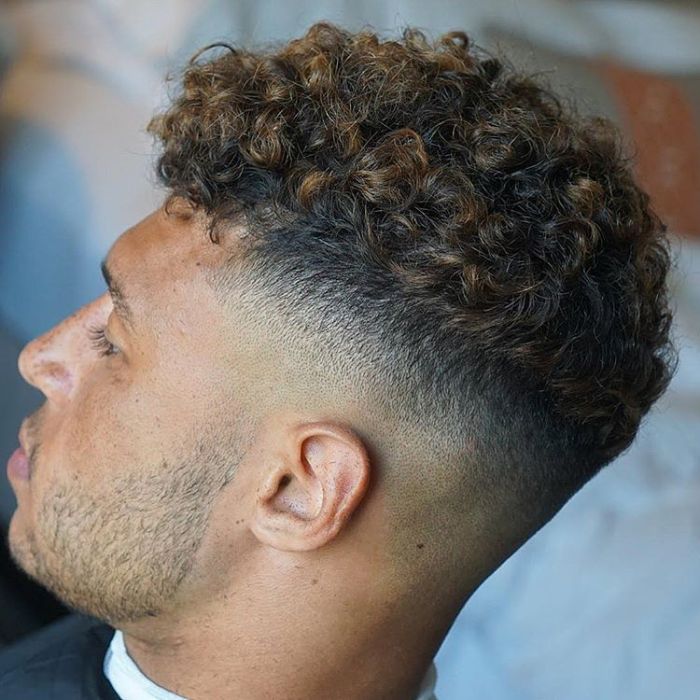Childrens Hairstyles for Curly Hair
Popular Children’s Curly Hairstyles
Childrens hairstyles for curly hair – Curly hair on children can be both a blessing and a challenge. The right hairstyle can enhance their natural beauty and make hair care easier, while the wrong one can lead to frustration and damage. This section explores popular curly hairstyles categorized by age group, detailing their creation and maintenance.
Popular Curly Hairstyles by Age Group
Choosing the right hairstyle depends on your child’s age, hair length, and curl type. The following table provides a range of options.
| Hairstyle Name | Age Group | Description | Image Description |
|---|---|---|---|
| Wash-and-Go | Toddler, Preschool, School-age | A simple style where hair is washed, conditioned, and allowed to air dry naturally. | A child with naturally defined, bouncy curls, showcasing the effortless texture and volume of a wash-and-go style. The curls are evenly distributed, and the hair appears healthy and shiny. |
| Mini Bantu Knots | Toddler, Preschool | Small, tight knots created throughout the hair, often left overnight for defined curls. | A toddler with numerous small, perfectly formed bantu knots across their head. The knots are evenly sized and spaced, creating a visually appealing and textured look. The hair appears neatly styled and protected. |
| Pigtails with Puffs | Preschool, School-age | Two pigtails, each with a small puff at the crown, adding volume and style. | A child with two high pigtails, each featuring a fluffy puff at the base. The pigtails are neatly tied, and the puffs add a touch of playful volume. The hair looks bouncy and well-maintained. |
| Space Buns | School-age | Two buns positioned high on the head, ideal for keeping hair out of the face during activities. | A child with two neatly formed buns positioned on either side of the head. The buns are secured tightly, and the hair is pulled back smoothly. The overall style is both practical and stylish. |
| Braids (various styles) | Preschool, School-age | Multiple braid styles are possible, from simple single braids to intricate cornrows or fishtails. | A child with several intricately woven braids running down the sides of their head, showcasing the artistry and detail of the braiding style. The braids are neat, and the hair is well-protected. |
| Twists (various styles) | Preschool, School-age | Similar to braids, twists offer various styles, from simple two-strand twists to more complex variations. | A child with two-strand twists neatly arranged across their scalp, creating a stylish and protective hairstyle. The twists are uniform in size and evenly spaced. |
| Curly Top Knot | School-age | A high, loose bun, ideal for longer hair. | A child with a high, voluminous top knot. The curls are loosely gathered, creating a relaxed yet chic look. The bun is secured but not overly tight. |
| Half-Up Half-Down | Preschool, School-age | A portion of the hair is tied up, leaving the rest loose and flowing. | A child with the top section of their hair pulled back into a small, loose tie, leaving the rest of their curls to cascade down their back. |
| Headbands | Toddler, Preschool, School-age | A simple accessory to keep hair out of the face and add a touch of style. | A child with a colorful headband neatly holding their curls away from their face, adding a playful touch to their appearance. |
| Cornrows | School-age | Closely-braided rows of hair, often extending from the hairline to the nape of the neck. | A child with neat, closely-braided cornrows running from their forehead to the back of their head. The cornrows are uniform and precisely done. |
Creating Popular Curly Hairstyles: Step-by-Step
Here’s how to create three popular styles:
- Wash-and-Go: 1. Wash hair with a moisturizing sulfate-free shampoo. 2. Condition thoroughly. 3.
Apply a leave-in conditioner and curl cream. 4. Gently scrunch the hair upwards to encourage curl definition. 5. Allow to air dry or diffuse gently.
- Mini Bantu Knots: 1. Section damp hair into small squares. 2. Twist each section tightly. 3.
Wrap each twist into a small knot and secure with a bobby pin. 4. Leave overnight or for several hours. 5. Gently unravel the knots for defined curls.
- Pigtails with Puffs: 1. Section hair at the crown into two parts, creating a puff on each side. 2. Secure each puff with a hair tie. 3.
Gather the remaining hair into two pigtails. 4. Secure with hair ties.
Comparing Curly Hairstyle Maintenance
Different styles require varying levels of maintenance:
- Wash-and-Go: Minimal maintenance, but requires the right products to prevent frizz and dryness.
- Braids: Relatively low maintenance once styled, but can take time to braid initially. Lasts for several days.
- Twists: Similar maintenance to braids; longer lasting than wash-and-gos but requires more time to style initially.
Haircare Routine for Curly-Haired Children: Childrens Hairstyles For Curly Hair
A consistent haircare routine is crucial for maintaining healthy, manageable curls. This routine emphasizes gentle cleansing, deep conditioning, and minimizing manipulation.
Sample Curly Haircare Routine
This routine should be adapted based on your child’s hair type and needs.
- Wash: Wash hair 1-2 times a week with a sulfate-free, moisturizing shampoo. Focus on the scalp, avoiding excessive scrubbing of the lengths.
- Condition: Use a moisturizing conditioner, focusing on the ends. Leave in for a few minutes before rinsing.
- Leave-in Conditioner: Apply a leave-in conditioner to detangle and add moisture. This helps manage frizz and adds shine.
- Curl Cream or Gel: Apply a curl cream or gel to define curls and reduce frizz. The amount will depend on hair density and texture.
- Detangling: Use a wide-tooth comb or your fingers to gently detangle hair while the conditioner is still in. Start from the ends and work your way up.
- Drying: Air dry or use a diffuser attachment on a low heat setting. Avoid rubbing the hair with a towel, which can cause frizz.
Importance of Sulfate-Free and Moisturizing Products
Sulfates are harsh detergents that strip natural oils from the hair, leading to dryness, breakage, and frizz. Moisturizing products, on the other hand, replenish lost moisture, keeping curls hydrated and healthy.
Detangling Curly Hair Without Damage, Childrens hairstyles for curly hair
Always detangle hair when wet and conditioned to minimize breakage. Use a wide-tooth comb or your fingers, starting from the ends and working your way up slowly and gently.
Styling Products and Tools
The right products and tools are essential for achieving and maintaining beautiful, healthy curls. Choosing the right ones can significantly improve the ease of styling and the overall health of your child’s hair.
Recommended Styling Products
| Product Type | Brand Example | Benefits | Drawbacks |
|---|---|---|---|
| Leave-in Conditioner | SheaMoisture | Adds moisture, detangles, and improves manageability. | Can weigh down fine hair if used excessively. |
| Curl Cream | Cantu | Defines curls, adds moisture, and reduces frizz. | Can leave a sticky residue if overused. |
| Gel | Eco Styler | Provides strong hold and definition, especially for tighter curls. | Can cause buildup if not rinsed regularly. |
| Hair Oil | Coconut Oil | Adds shine, moisture, and protects against damage. | Can be heavy and greasy if overused. |
Best Combs and Brushes for Curly Hair
Wide-tooth combs and detangling brushes with flexible bristles are ideal for minimizing breakage and damage. The wide spacing prevents pulling and snagging, while flexible bristles gently glide through curls.
Heat Styling Tools and Safety Guidelines
Heat styling should be minimized on children’s hair to prevent damage. If used, always apply a heat protectant spray and use the lowest heat setting possible. Diffusers can be helpful for gentle drying, promoting curl definition without excessive heat.
Addressing Common Curly Hair Problems
Understanding and addressing common curly hair issues is crucial for maintaining healthy, happy curls. Proactive measures and gentle care can prevent many problems.
Managing Frizz and Dryness
Frizz and dryness are common concerns. Regular deep conditioning treatments, using moisturizing products, and minimizing heat styling can help combat these issues. Applying a leave-in conditioner and sealing with a hair oil can help lock in moisture.
Preventing and Treating Split Ends and Breakage

Source: haircutinspiration.com
Regular trims, gentle detangling, and avoiding harsh chemicals can prevent split ends and breakage. Using a satin pillowcase can also minimize friction and breakage while sleeping.
Maintaining Healthy Scalp Hygiene
A healthy scalp is essential for healthy hair. Gentle cleansing, avoiding excessive scratching, and using scalp treatments as needed can promote a healthy scalp environment.
Hairstyles for Different Hair Textures
Curly hair comes in a variety of textures, each requiring slightly different styling approaches. Understanding your child’s curl type will help you choose the most suitable and flattering hairstyles.
Hairstyles Based on Curl Type
- Loose Waves (2A-2C): Wash-and-go, half-up half-down, braids, low ponytails.
- Tight Coils (3A-4C): Bantu knots, twists, braids (cornrows, box braids), protective styles.
Influence of Hair Density and Length

Source: therighthairstyles.com
Hair density and length significantly influence hairstyle choices. Thicker hair might benefit from styles that distribute weight evenly, while longer hair might require more elaborate styles to manage length. For finer hair, simpler styles are often better to avoid weighing the hair down.
Adapting Hairstyles to Activity Level and Preferences
Consider your child’s activity level and personal preferences when selecting a hairstyle. For active children, practical styles like braids or twists are ideal. Always involve your child in the decision-making process to ensure they feel comfortable and confident in their chosen style.
Popular Questions
How often should I wash my child’s curly hair?
The frequency depends on the child’s hair type and activity level, but generally, 1-2 times a week is sufficient to avoid over-drying.
My child’s curly hair is always tangled. What can I do?
Use a detangling spray or conditioner before brushing, and always detangle gently from the ends working upwards.
What are some good ways to protect my child’s curly hair at night?
Braids, twists, or a satin bonnet or pillowcase will minimize friction and breakage overnight.
Finding the perfect style for a child’s curly hair can be a fun challenge, requiring creativity and consideration of their hair’s unique texture. This often involves exploring different techniques to manage volume and enhance the natural curls. Interestingly, many styling principles translate across age groups; for instance, the layered cuts popular with children also offer flattering options for women embracing their grey hair, as you can see from this resource on hairstyles for grey hair women.
Ultimately, both children’s and adult’s hairstyles benefit from understanding hair texture and choosing cuts that complement individual features.
Are there any specific vitamins or supplements that can help improve my child’s curly hair health?
A balanced diet rich in protein and vitamins is essential. Consult a pediatrician or nutritionist for personalized advice.












